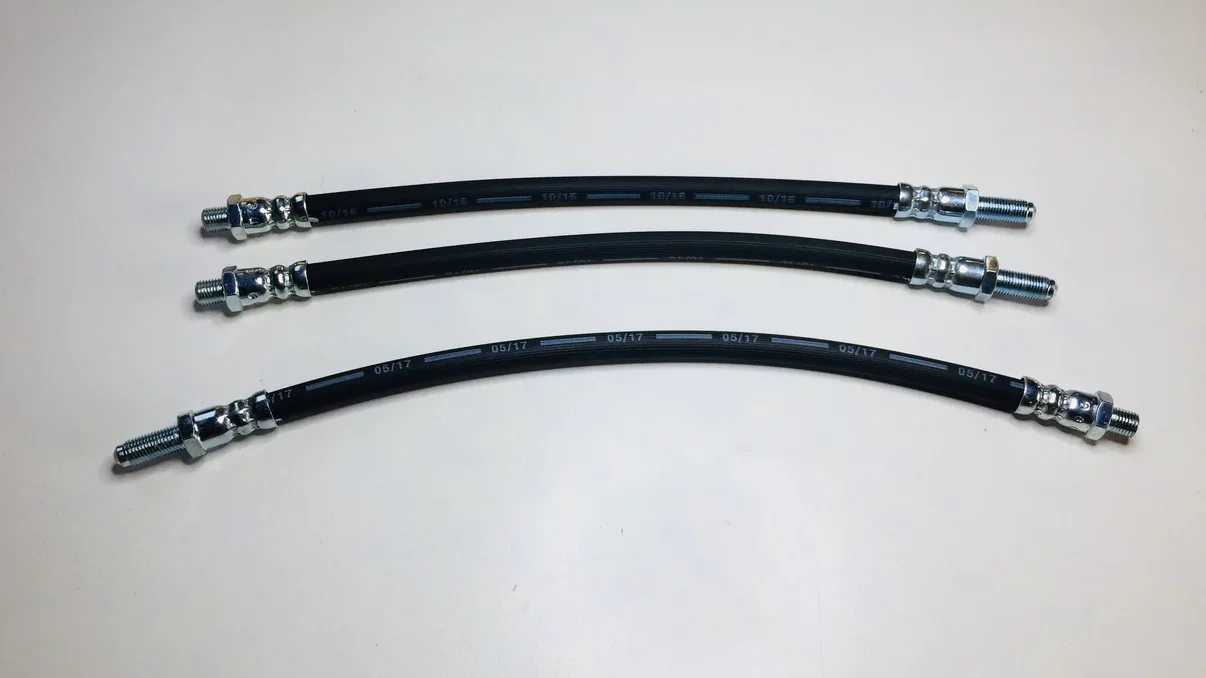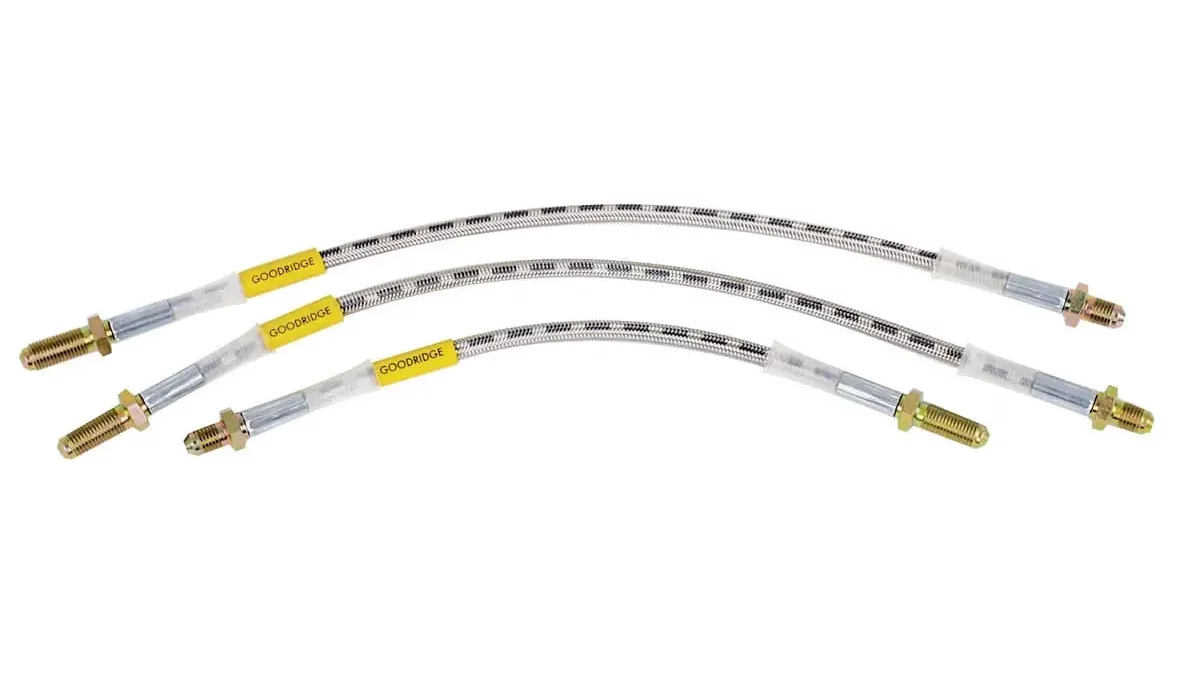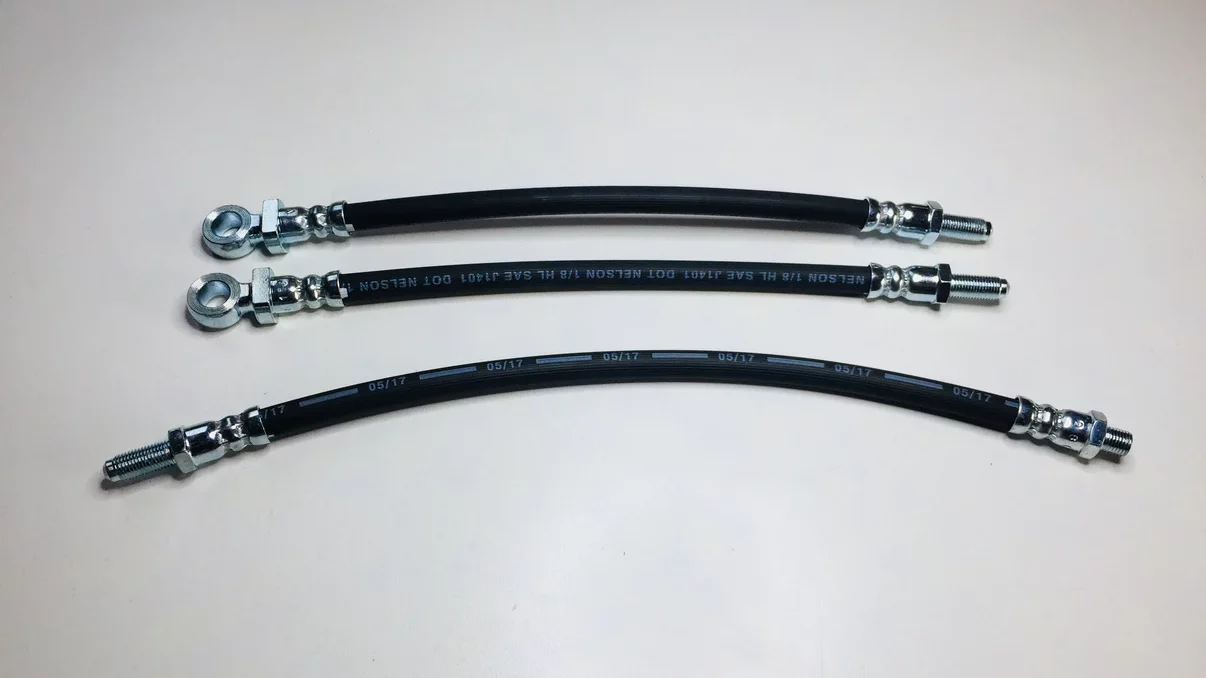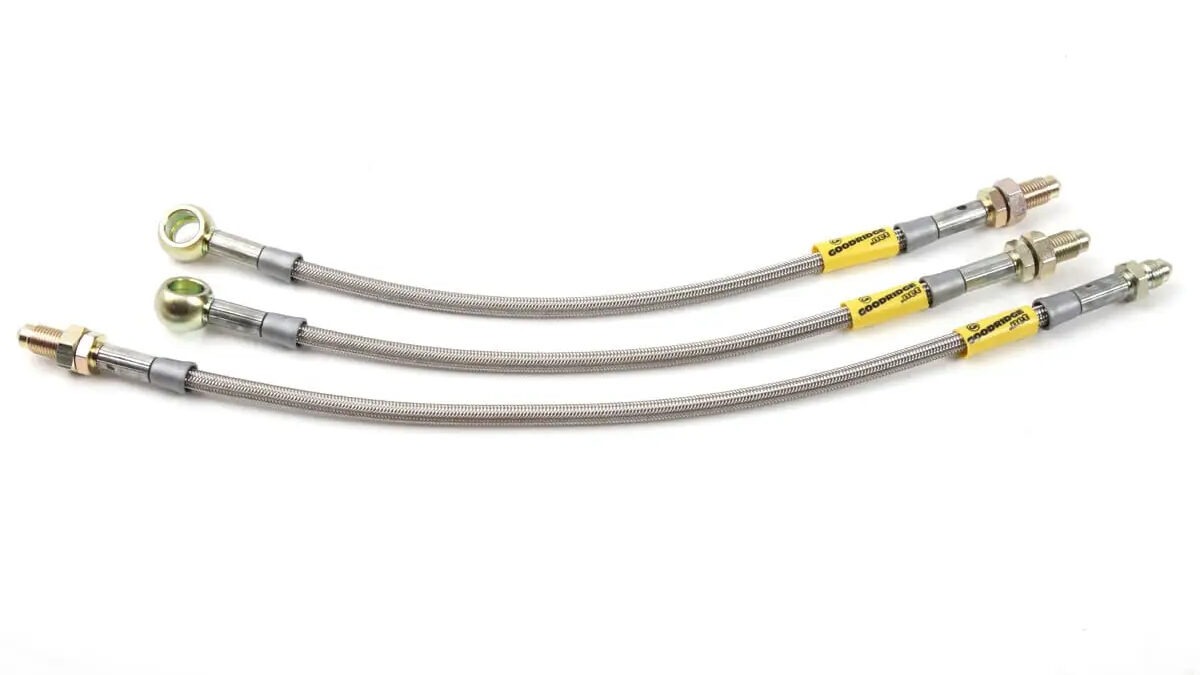Hydraulics are the number one fault area on British cars, primarily because moisture gets in the fluid and causes problems. The most common repair issue in the hydraulic system is leaking or seized wheel cylinders, master cylinders, and slave cylinders… but there is one issue that sometimes gets lost in the shuffle during maintenance proceedings… rubber hydraulic hoses.
This week, we had a Bugeye up on one of our lifts for a complaint of sticking rear brakes. The car would stop, but the rear brakes would stay applied even after the brake pedal returned. After a few minutes, the rear brakes would release and the cycle would repeat itself. This is a tell-tale sign that your brake hoses need to be replaced. In the below photo, you can see why:
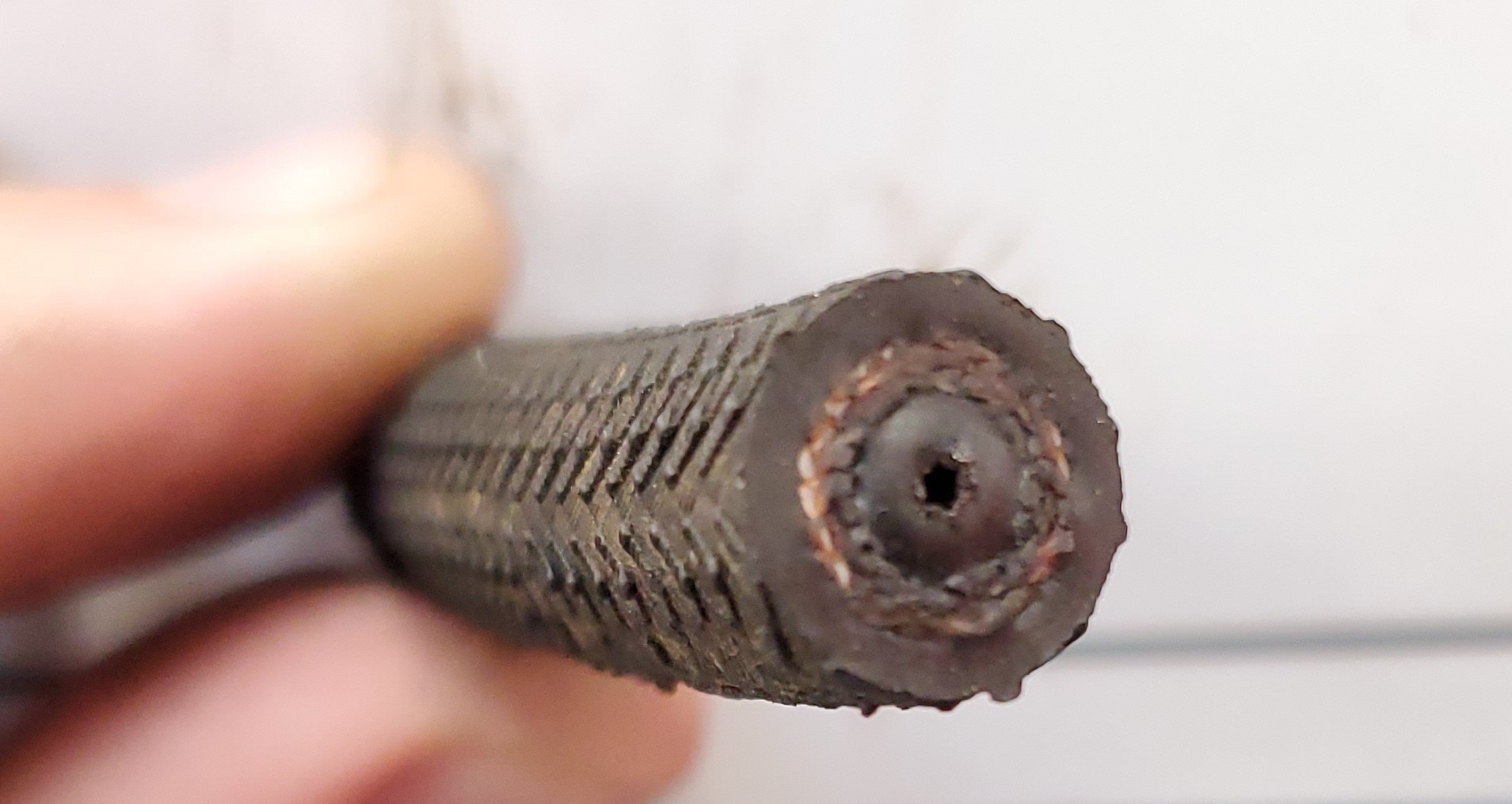
Brake hoses are made of rubber. As with any rubber part exposed to the elements, brake hoses deteriorate over time; standard hydraulic fluid, which absorbs moisture from the atmosphere, doesn’t help matters, either. The “fun” part about brake hoses is that they are double-layer hoses, two layers of rubber bonded together. The most common failure point on hoses is not an external rupture and susequent leak; what usually happens is the two layers of rubber separate, the inner layer collapses on itself, and your brake hose turns into a one-way check valve. This allows brake pressure to travel to the brakes and applying them, but not allowing the fluid to travel away from the wheels to allow those brakes to retract. It will feel like your parking brake is stuck on, but in reality, your brake hose is holding the fluid hostage!
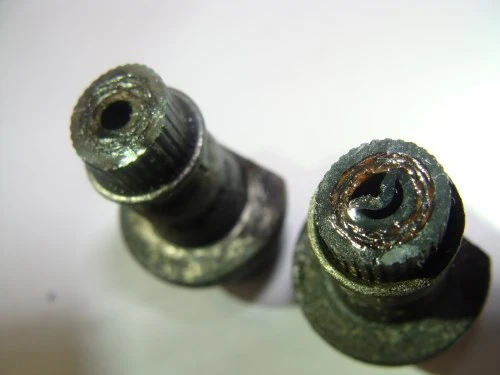
When hose collapse happens, brakes will either lock up and stay locked, or won’t engage at all, and of course, that will ruin your day. In addition, locked-up brakes will overheat and cause warped brake drums, can melt the bonding glue used to glue the linings on the shoes, and melt rubber seals in the wheel cylinder and create leaks.
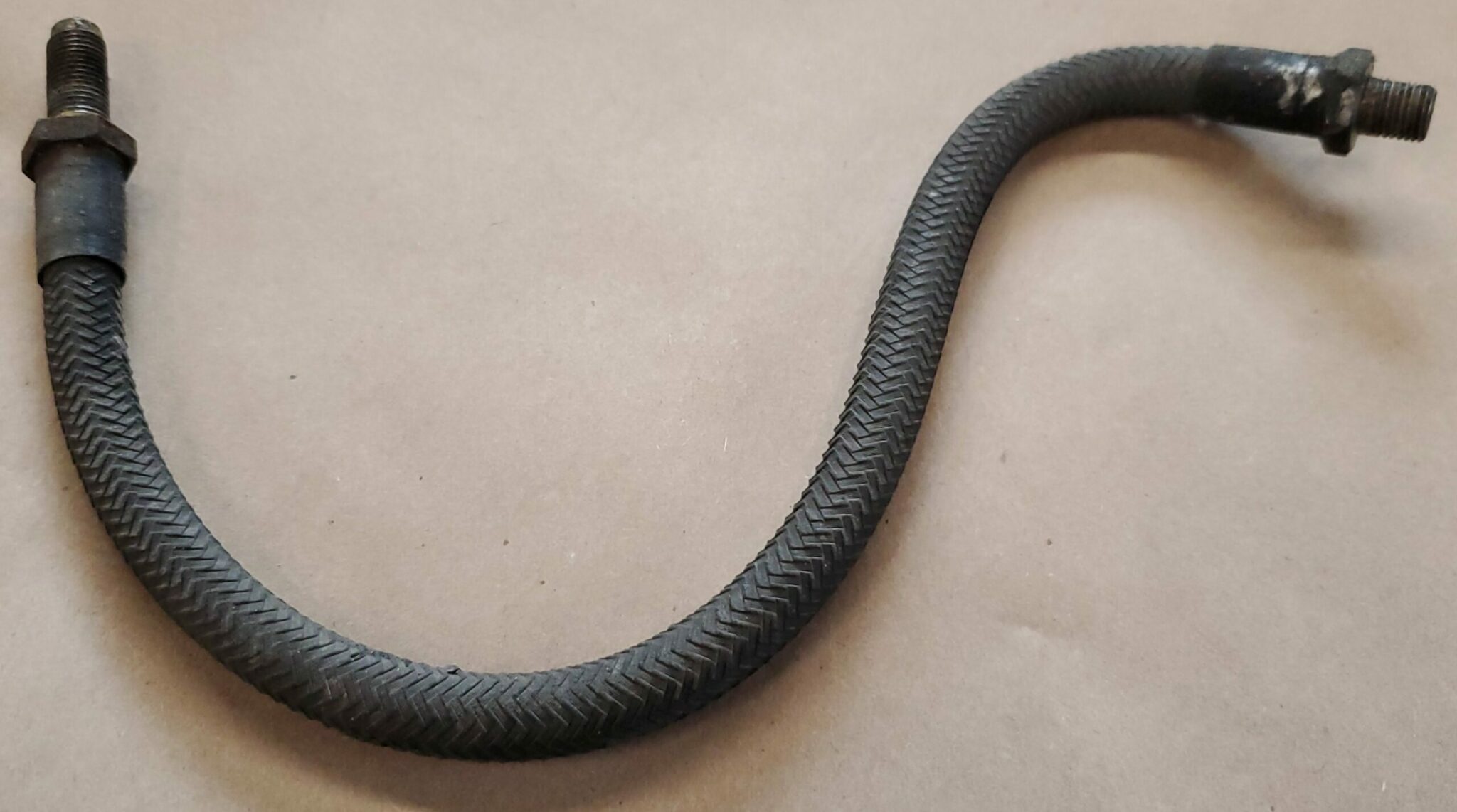
So how do you know when it’s time to change your brake hoses? Well, if you are experiencing the symptoms we have described up above with your brakes, that’s usually a good sign. But alternatively, any time you are doing routine maintenance on your Bugeye, get up underneath and inspect the hoses visually. Excessive cracking, slices, bulging, nylon threads showing, or leakage from the fittings are indicators of failed/failing hoses. It’s also a good idea to change your hoses any time you have to change other hydraulic components, like a wheel cylinder, brake line, or master cylinder.
Even if you hoses look good, it’s a good idea to change them every seven to ten years. Rubber has a natural shelf life of about this length of time, and even if your hoses look visually pristine, they could be aged-out internally, and at that point, you have a ticking time bomb in your braking system. But how do you tell how old your brake hose is? Lucky for us, modern replacement brake hoses have a built-in birth certificate!
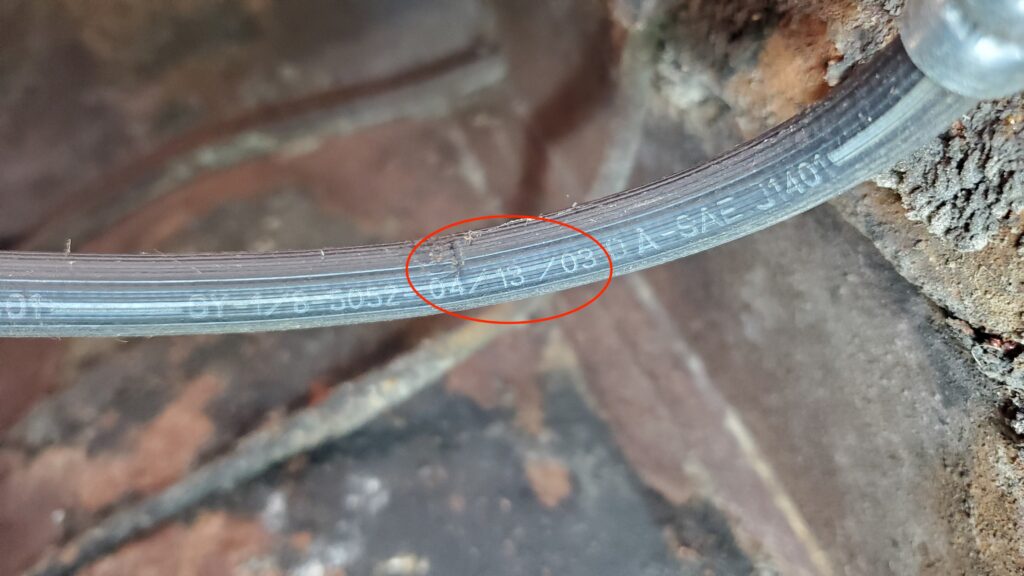
As you can see in the above photo, modern brake hoses come stamped with a myriad of data, most of which doesn’t apply to the average mechanic. But what does apply is the numbers I’ve circled. This sequence is a date of manufacture, meaning we know EXACTLY when any brake hose has been manufactured, and thus, we also know its expiration date. This particular hose celebrates its twentieth birthday in two weeks! But no cake for this hose… its birthday present this year is permanent retirement!
No matter your brake configuration, we have all of your hose replacement needs in our online catalog! We even have braided stainless steel lines for added corrosion resistance and for that “race car” look! Click the photos below to order the hoses you need or visit our parts catalog by clicking here!











